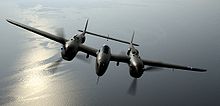
The Lockheed P-38 Lightning is an American single-seat, twin piston-engined fighter aircraft that was used during World War II. Developed for the United States Army Air Corps (USAAC) by the Lockheed Corporation, the P-38 incorporated a distinctive twin-boom design with a central nacelle containing the cockpit and armament. Along with its use as a general fighter, the P-38 was used in various aerial combat roles, including as a highly effective fighter-bomber, a night fighter, and a long-range escort fighter when equipped with drop tanks. The P-38 was also used as a bomber-pathfinder, guiding streams of medium and heavy bombers, or even other P-38s equipped with bombs, to their targets. Used in the aerial reconnaissance role, the P-38 accounted for 90 percent of American aerial film captured over Europe. Although it was not designated a heavy fighter or a bomber destroyer by the USAAC, the P-38 filled those roles and more; unlike German heavy fighters crewed by two or three airmen, the P-38 with its lone pilot was nimble enough to compete with single-engine fighters.
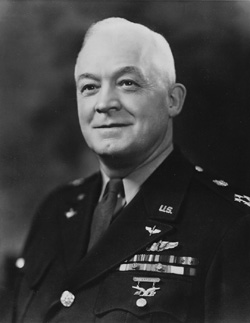
Operation Bolero was the commonly used reference for the code name of the United States military troop buildup in the United Kingdom during World War II in preparation for the initial cross-channel invasion plan known as Operation Roundup, to be implemented in mid-1943, or for its lesser contingency alternative, Operation Sledgehammer, to be executed in the fall of 1942 in the event of German setbacks or to ease Axis pressure on the Eastern Front. What later became the Bolero plan – the buildup of a strategic air force in the United Kingdom, in preparation for Roundup – was first submitted by Commanding General of the U.S. Army Air Forces, Henry H. Arnold, to General George Marshall, the U.S. Army Chief of Staff, on April 12, 1942, and set in motion a huge movement of men and material that laid the groundwork for Operation Overlord.

The 1st Operations Group is the flying component of the 1st Fighter Wing, assigned to the USAF Air Combat Command. The group is stationed at Langley Air Force Base, Virginia. The 1st Operations Group is the oldest major air combat unit in the United States Air Force, being the successor organization of the 1st Pursuit Group. The 1st Pursuit Group was the first air combat group formed by the Air Service, American Expeditionary Force, on 5 May 1918.
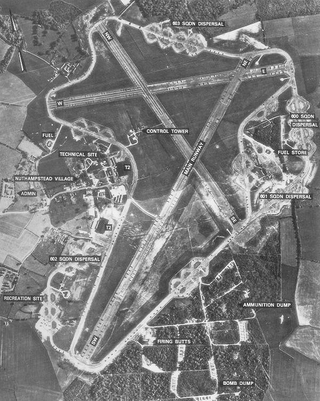
Royal Air Force Nuthampstead or more simply RAF Nuthampstead is a former Royal Air Force station in England. The airfield is located mostly in Hertfordshire between the villages of Nuthampstead and Anstey and the hamlet of Morrice Green in Hertfordshire and Langley, Lower Green and Clavering Park Wood in Essex. The eastern part of the airfield including part of the East-West Runway, the Fuel Store, the dispersal areas of 600 and 601 Squadrons and the northeastern perimeter track were all in Essex. RAF Nuthampstead is located four miles to the east of the A10 Hertford to Royston road.

Royal Air Force Atcham, or more simply RAF Atcham, is a former Royal Air Force station located 5 miles (8 km) east of Shrewsbury, Shropshire, England, on the north eastern boundary of Attingham Park.

The Kee Bird was a United States Army Air Forces Boeing B-29 Superfortress, serial 45-21768, of the 46th Reconnaissance Squadron, that became marooned after making an emergency landing in northwest Greenland during a secret Cold War spying mission on 21 February 1947. While the entire crew was safely evacuated after spending three days in the isolated Arctic tundra, the aircraft itself was left at the landing site. It lay there undisturbed until 1994, when a privately funded mission was launched to repair and return it. During the attempted recovery, a fire broke out, resulting in the destruction and loss of the airframe on the ground.
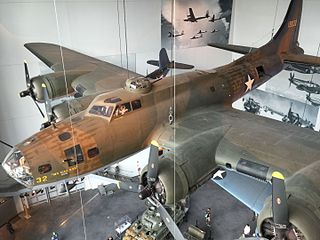
My Gal Sal is a B-17E-BO Flying Fortress whose pilot was forced to land it on the Greenland icecap during World War II. Many years later, it was recovered and returned to the United States to be restored. It is one of only four surviving B-17Es in existence.

The 122d Fighter Squadron is a unit of the Louisiana Air National Guard 159th Fighter Wing located at Naval Air Station Joint Reserve Base New Orleans, Louisiana. The 122d is equipped with the McDonnell Douglas F-15 Eagle.
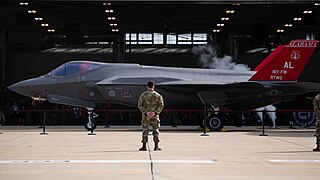
The 100th Fighter Squadron is a unit of the Alabama Air National Guard 187th Fighter Wing located at Dannelly Field, Alabama. The 100th is equipped with the Lockheed Martin F-35A Lightning II.

The 6th Weapons Squadron is an active United States Air Force unit. It is assigned to the USAF Weapons School, based at Nellis Air Force Base, Nevada. It was previously assigned to the Seventh Air Force, being inactivated at Yokota Airfield, Japan on 20 February 1947.

The 33d Operations Group is the flying component of the 33d Fighter Wing, assigned to Air Education and Training Command of the United States Air Force. The group is stationed at Eglin Air Force Base, Florida.
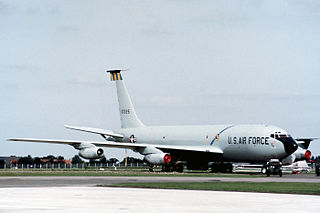
The 42d Air Refueling Squadron is an inactive United States Air Force unit. It was last assigned to the 42d Bombardment Wing at Loring Air Force Base, Maine, where it was inactivated on 30 April 1994.
This is a partial list of accidents and incidents involving the Boeing-designed B-17 Flying Fortress. Combat losses are not included except for a very few cases denoted by singular circumstances. A few documented drone attrition cases are also included.
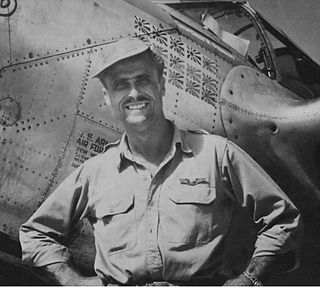
Robert Burdette Westbrook was a United States Army Air Forces lieutenant colonel and a World War II flying ace. Westbrook commanded the 44th Fighter Squadron, and became the leading fighter ace of the Thirteenth Air Force. He is also the ninth ranking fighter ace in the Pacific during World War II and also one of ten United States Army Air Forces pilots who became an ace in two different types of fighter aircraft.
Igtip Kangertiva, also known as Comanche Bay. is a fjord in Eastern Greenland. It is part of the Sermersooq municipality.

